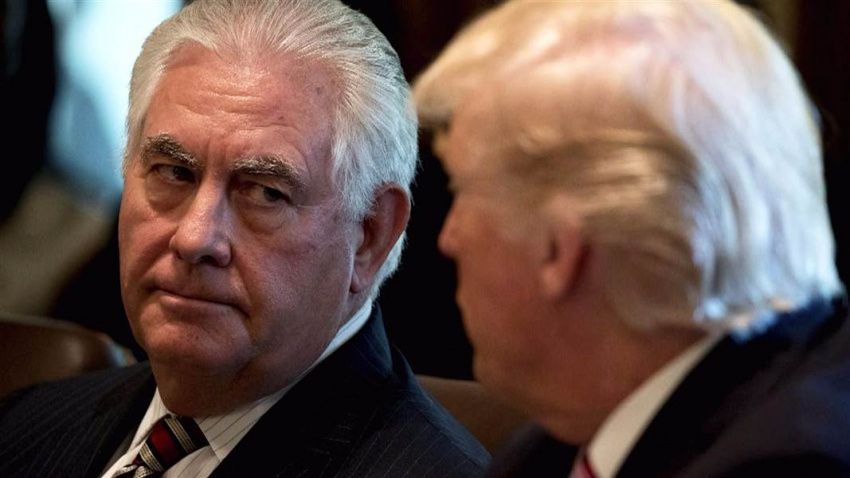Behind White House’s Fake News on Tillerson

Several days after initiating the rumors on the likely replacement of Secretary of State Rex Tillerson with the more hawkish CIA Director Mike Pompeo, the White House is now calling the self-initiated "report" a fake news, with President Trump insisting that Tillerson is neither fired nor on his way out.
The question, then, is what prompted a number of high White House officials to go public about the report and then use the White House spokesperson to lend credibility to it without however explicitly confirming it? According to aspects of the US media, the purpose was to "publicly shame" Tillerson, or rather jolt or discipline him into line with White House's more hawkish foreign policy positions. Already, it is an open secret that Trump is relying extensively on his son-in-law Jared Kushner, with important aspects of the US's Middle East policy and Tillerson and the State Department are kept in the dark about Kushner's activities. Also, tensions between Tillerson and Nikki Haley, the US's envoy to UN, have been simmering for months and it is still raging to some degree despite Tillerson's feeble attempts to rein in on the bombastic and even jingoistic diplomat who calls her herself the "new sheriff" in town.
On the policy front, of course, the battle between the White House and the State Department covers a wide range of issues such as Iran and North Korea and climate as well as the tone and style of foreign policy, seeing how little use Tillerson has for "twitter diplomacy" in sharp contrast to his boss at the Oval Office. It is therefore perfectly possible that the main purpose of the "report" on coming Tillerson's ouster was to steer him more closely in White House's direction, in light of Trump's confrontational approach toward both Iran and North Korea.
At the same time, another possibility is that Trump was indeed seriously contemplating Tillerson's replacement with Pompeo, who echoes him on key foreign policy issues, and then changed his mind after sending out the public feelers through the rumored report, which is apparently shelved for now. Trump's latest show of confidence in Tillerson will likely put the matter to rest for the near future, perhaps giving Trump the satisfaction of having leveraged the report over his relatively more moderate secretary of state. In response, Tillerson has been sounding more hawkish against Iran, increasingly echoing the Iranophobic sentiments of the Saudis. Concerning the latter, slowly but surely US and France are joining forces in leading a new anti-Iran concert in the Middle East, and we should therefore expect fewer and fewer instances of policy differences between the White House and the State Department as far as Iran is concerned.
With respect to the nuclear accord, which Trump has refused to certify, Congress is still at a loss as to how to proceed and, chances are, no important Iran initiative will emerge from the Congress in the near future, notwithstanding the Trump administration's internal divisions regarding the nuclear agreement, inviting inaction. It is perfectly possible that the momentum to scrap the agreement has now passed and the much-feared total demise of the historic accord may have been exaggerated.

